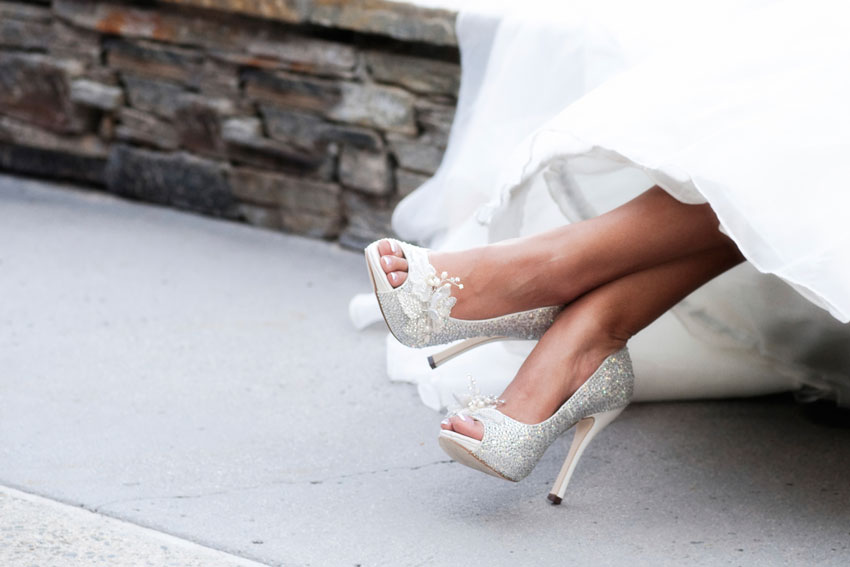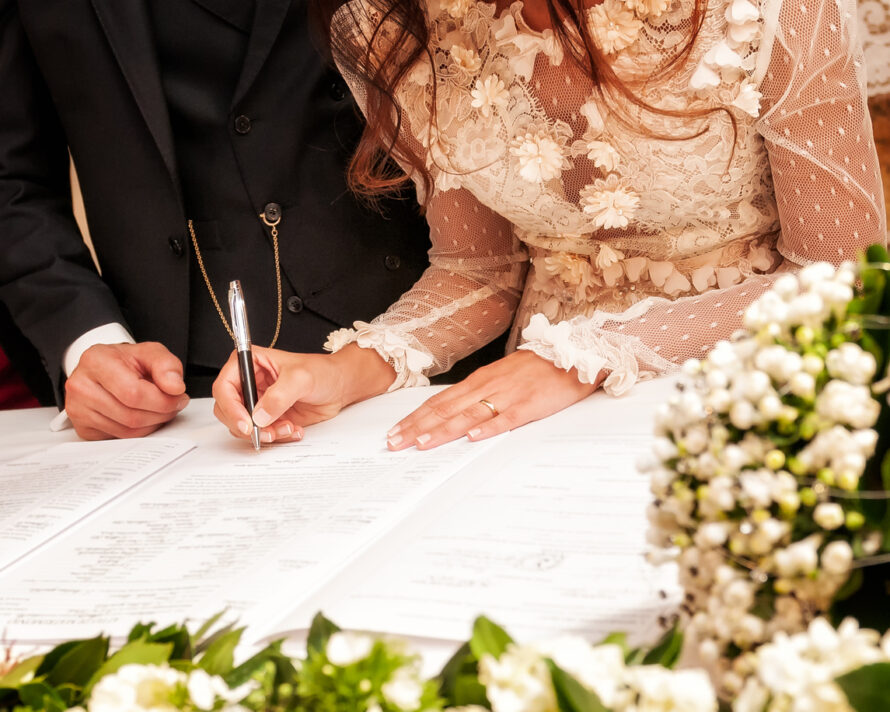I bought THE. MOST. BEAUTIFUL. wedding dress, my dream wedding dress, in fact, during a sale. The only thing is, I’m quite short and it’s far, far too long for me. I need to have it hemmed but I’m not sure how much to take off the bottom. How long should a wedding gown be?
Samantha says:
How lovely that you found your dream wedding gown – and on sale, too! The short answer to your question is that a wedding dress should be as long – or as short – as you like, however, obviously, you don’t want to wear a gown so short, your guests will receive an eyeful every time you sit down or bend over. Ehem.
That said, there are plenty of short wedding dresses that are perfectly elegant and demure, so don’t be feel too restricted by how long other people thing a wedding dress should be.
However, what you do need to think about is the style and design of your wedding gown because that will determine how much you can hem the dress or, indeed, if you can hem it at all. How much you chop off, too, will impact your overall wedding day look, as well as the way the dress hangs on your body, so it’s important to choose just the right length based on your own body and the dress’ design and that’s something your dressmaker or seamstress will be able to help you determine.
Traditionally, most bridal gowns are floor length, but that can mean different things to different designers, so let’s first take a look at how dressmakers measure wedding gown length:
[ew-supplier-carousel]
Hollow to hem
Hollow to hem is the measurement that a dressmaker will use to determine the length of a dress. It involves measuring the bride from the centre of the collar bone (the hollow) down to the floor. To take this measurement accurately the bride should be standing straight and relaxed without any shoes on. It’s not possible to take this measurement yourself, so you’ll need to get someone to help you. Once the dressmaker has this measurement they will take off a certain amount, typically between 3cms and 6cm, to ensure the dress isn’t dragging on the floor and that the bride won’t get her shoes stuck in it and fall over.
There are also a few other facts that may further affect how much of your dress to hem:
Your bridal shoes
If you’re planning to wear towering heels on your wedding day, you’ll want to limit the amount you hem your dress from the floor to 3cm or less. On the other hand, if you’re planning on wearing flats, you’ll probably want to hem your dress by more than 3cm to prevent you tripping over it. Around 5cm would probably work well. Statement shoe, those that are highly coloured or accessorised, are a popular choice for modern brides, so if your wedding shoes are a key part of your outfit, you might want to hem your dress by 6cm or more to show them off.
Your wedding venue
If you’re planning a backyard wedding, or an outdoor wedding in a park or garden, you may want a slightly higher hem to prevent your dress getting too dirty on the ground, or picking up fallen leaves or grass. Equally, if your wedding venue has many stairs, especially on your route to the ceremony, a higher hemline can reduce the possibility of you falling flat on your face.
In addition to these, think about your own height. If you’re a little on the short side, you may want to have your dress’ skirt as close as possible to floor length, without actually touching the floor, in order to look slightly taller.
Also consider how much dancing you plan to do. If you’re expecting to dance the night away, or you think you’ll be kicking off your bridal heels when you hit the dance floor, you’ll do better with a slightly higher hem of perhaps 6cm.
While a floor-length bridal gown is still the most popular option, don’t forget there are plenty of other styles for brides who want to try something a little different. Shorter lengths such as tea-length, ballerina, knee length, or even minis are available for brides who don’t mind breaking with tradition and showing off their fabulous pins.



